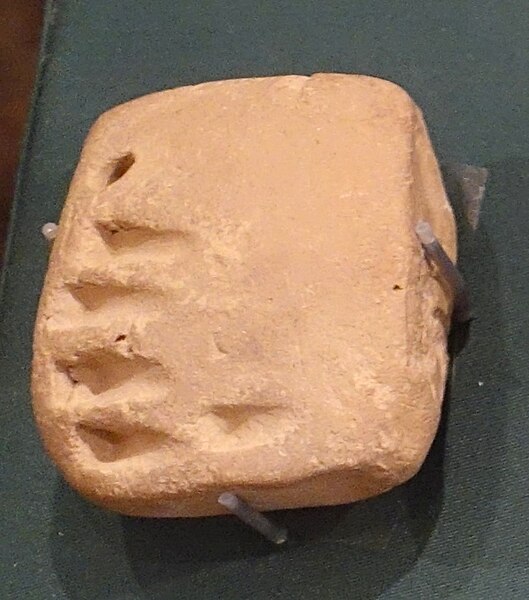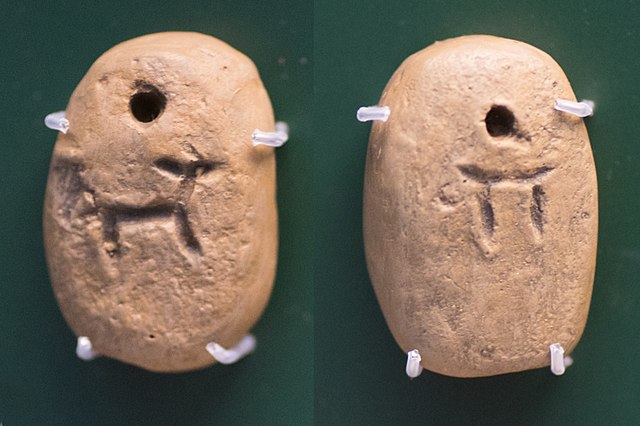In the Ancient Near East, clay tablets were used as a writing medium, especially for writing in cuneiform, throughout the Bronze Age and well into the Iron Age.
List of the victories of Rimush, king of Akkad, upon Abalgamash, king of Marhashi, and upon Emahsini, King of Elam, c. 2270 BCE.
Sumerian clay tablet, currently housed in the Oriental Institute at the University of Chicago, inscribed with the text of the poem Inanna and Ebih by the priestess Enheduanna, the first author whose name is known
The Babylonian Plimpton 322 clay tablet, with numbers written in cuneiform script. Believed to have been written about 1800 BCE, this table lists two of the three numbers in what are now called Pythagorean triples.
Cuneiform is a logo-syllabic writing system that was used to write several languages of the Ancient Near East. The script was in active use from the early Bronze Age until the beginning of the Common Era. Cuneiform scripts are marked by and named for the characteristic wedge-shaped impressions which form their signs. Cuneiform is the earliest known writing system and was originally developed to write the Sumerian language of southern Mesopotamia.
A trilingual cuneiform inscription of Xerxes I at Van Fortress in Turkey, an Achaemenid royal inscription written in Old Persian, Elamite and Babylonian forms of cuneiform
Clay bulla and tokens, 4000–3100 BC, Susa
Numerical tablet, 3500–3350 BC (Uruk V phase), Khafajah
Pre-cuneiform tags, with drawing of goat or sheep and number (probably "10"), Al-Hasakah, 3300–3100 BC, Uruk culture







